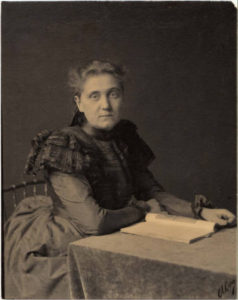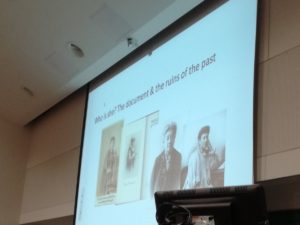 We are delighted to announce that the New Jersey Council for the Humanities has awarded the Jane Addams Papers a grant of $11,400 for our “Expanding Audience Participation with the Jane Addams Papers” project.
We are delighted to announce that the New Jersey Council for the Humanities has awarded the Jane Addams Papers a grant of $11,400 for our “Expanding Audience Participation with the Jane Addams Papers” project.
This project aims to encourage use of the digital edition among students, teachers, and the general public. We will build a crowdsourcing site where members of the public can engage with documents, create transcriptions, and rate the documents to build a new search option to highlights the most useful documents. We also want to encourage students to work with the digital edition, and will create guides for high-school and grammar school students working on National History Day projects and school projects. These tutorials will introduce topics, provide suggestions for the best texts and search strategies for that topic, and suggest sources for further research.
We will be collaborating with students in Ramapo’s Teacher Education program, with the New Jersey National History Day coordinators, and local middle and high school teachers to develop these new resources on our digital edition site.
The Jane Addams Papers’ mission is to digitize and describe the documents, and create historical context for them by identifying the people, organizations, and events mentioned in the texts. We have received funding from Ramapo College, the National Historical Publications and Records Commission, the National Endowment for the Humanities, the Gladys Krieble Delmas Foundation, and the Ruth McCormick Tankersley Charitable Trust to undertake this work. But we want to do more than build a site and hope that people will use it. Scholars and advanced students will find our site, but this outreach project will advance our mission by reaching out to students, teachers and the general public.
We think the best way to do that is to provide crowdsourcing opportunities and offer guides for using the documents in the classroom. National History Day is a very popular program that challenges students in middle and high school to interpret history through one of twelve general themes. For this year’s theme “Conflict and Compromise in History,” we advised students to look at Addams’ opposition to World War I, or her decision to open the Hull-House settlement, pointing them to the best documents and providing them with context. We will continue to expand the guides by adding more suggestions as we mount more material on the site. We also want to create topic guides for other issues, such as child labor, woman suffrage, and recreation.
We are looking forward to getting started on this exciting collaboration and will keep you posted on the results.
Cathy Moran Hajo is the Editor and Director of the Jane Addams Papers Project at Ramapo College of New Jersey. She is an experienced scholarly editor, having previously worked for over 25 years as Associate Editor at the Margaret Sanger Papers at New York University. Dr. Hajo received her Ph.D. in history from New York University in 2006, and is addition to her work on the Sanger Papers, published “Birth Control on Main Street, Organizing Clinics in the United States, 1916-1940,” in 2010.
Her teaching interests include scholarly editing and digital history, and she currently teaches for the Institute for Editing Historical Documents, the Digital Humanities Summer Institute. She teaches a digital history course at Ramapo College.






 Cathy led off the panel talking about the “Big Picture: Conceiving a Digital Edition of Jane Addams’ Papers,” providing a short history of the Addams Papers microfilm and book projects, and the process that went into deciding to digitize the microfilm edition. The decisions to be made involved thinking through the audience for the edition and what kinds of tools and resources they needed. In addition, Cathy discussed the decision to use the Omeka database-driven platform for the digital edition rather than using text encoding using XML. Going with a web-publishing friendly system allowed the Addams Papers to design a site that not only provides deep metadata, but also manages the project’s internal workflow, tracking information on each document as it passes through our permissions and copyright checks, metadata and transcription, and proofreading. Cathy also talked about her desire to see the Addams Papers edition be flexible enough that scholars and students can use its materials to build their own research projects.
Cathy led off the panel talking about the “Big Picture: Conceiving a Digital Edition of Jane Addams’ Papers,” providing a short history of the Addams Papers microfilm and book projects, and the process that went into deciding to digitize the microfilm edition. The decisions to be made involved thinking through the audience for the edition and what kinds of tools and resources they needed. In addition, Cathy discussed the decision to use the Omeka database-driven platform for the digital edition rather than using text encoding using XML. Going with a web-publishing friendly system allowed the Addams Papers to design a site that not only provides deep metadata, but also manages the project’s internal workflow, tracking information on each document as it passes through our permissions and copyright checks, metadata and transcription, and proofreading. Cathy also talked about her desire to see the Addams Papers edition be flexible enough that scholars and students can use its materials to build their own research projects.

